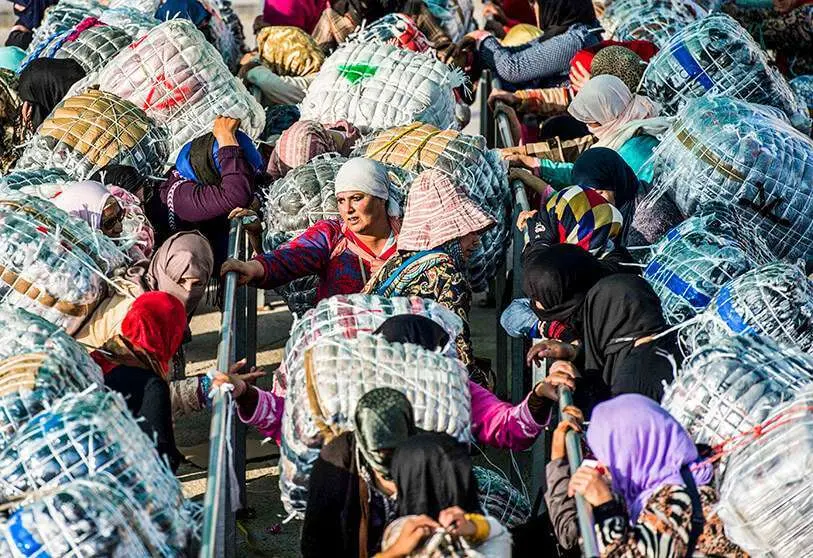The misery of the enclaves

Since Morocco decided to ban smuggling and close the points of contact with the two Spanish enclaves, Ceuta and Melilla, nothing has been done to enable the populations that lived off this "atypical" trade to sustain themselves.
The porous borders between Morocco and Spain provide a livelihood for thousands of families, and the flourishing smuggling has allowed the expansion of a parallel, rather tolerated market that benefited both residents for many years.
On the Moroccan side, the most destitute rent their bodies and labour to bring goods to the local market. Women are in the front line, loaded with heavy bundles, their backs bent, crossing the borders several times a day, earning them the nickname of female mules. A social pseudo-peace has taken hold in the region, even if it benefits the richest.
In February 2021, hundreds of people took to the streets of Fnideq to express their discontent at a year in which they had seen their purchasing power eroded without any support. An economic suffocation that the local population has experienced as a terrible injustice since the closure of all trade at the Bab Sebta station in October 2019. It should be remembered that the Melilla border post has been closed since 2018. "We no longer have anything to live on! ", chant the demonstrators in front of the authorities who have been unable to create a virtuous circle, to integrate border residents into the region's development projects, especially the massive Tangier Med, which could absorb a large part of the unemployment in these isolated areas. Moreover, despite the promises and announcements made, no immediate thought has been given to enabling thousands of people to earn a decent living after the sudden cessation of their activities, and the projects planned in the region will not have real economic benefits for another ten years or so, experts warn.
The current tensions are weighing on the fragile and precarious economic balance on which thousands of households in the kingdom depend. It is the weight of informal trade in Morocco that is being challenged by this crisis. It is estimated to account for 20-30% of the country's GDP and is estimated to create 70% of the jobs that are weighing on the current crisis. In volume, this illegal activity is estimated at between 15 and 20 billion Dirhams. The Moroccan channel Media 24 reported in an interview with Minister Ahmed Reda Chami that the closure of Bab Sebta is "a decision that is part of a logic of national sovereignty", (...) "a necessary measure [that] allows to curb the flow of smuggling that penalises what is made in Morocco, promotes informality and tax evasion and maintains social vulnerability in this area". Especially for women and families who live and survive on smuggling activities".
Words that do not appease the anger of the protesters who are urging the authorities to reopen the borders. A request that does not seem to be on Rabat's agenda.
Last Friday, the sit-in on Mohammed V boulevard was not authorised and the demonstrators were de facto registered as dissidents. The prefecture of M'diq-Fnideq considered this a violation of the provisions of the state of health emergency. Although the police tried to disperse the population, the clashes did not go smoothly. Six people were reportedly injured by police. Stone throwing and shoving were also reported, and 10 other people were taken to hospital. The local authorities have opened an investigation, but what is the response to the crisis?
The prefecture of Fniq has pledged a "programme for the development and implementation of support and assistance mechanisms aimed at boosting employability and promoting entrepreneurship for the benefit of people in precarious situations, especially women and young people". In support of these measures, 400 million dirhams (MDH) have been made available for the implementation of a series of projects under the Integrated Economic and Social Development Programme in the prefecture of M'diq-Fnideq and the province of Tetouan. Who will be affected by these measures and for how long will they be effective?

